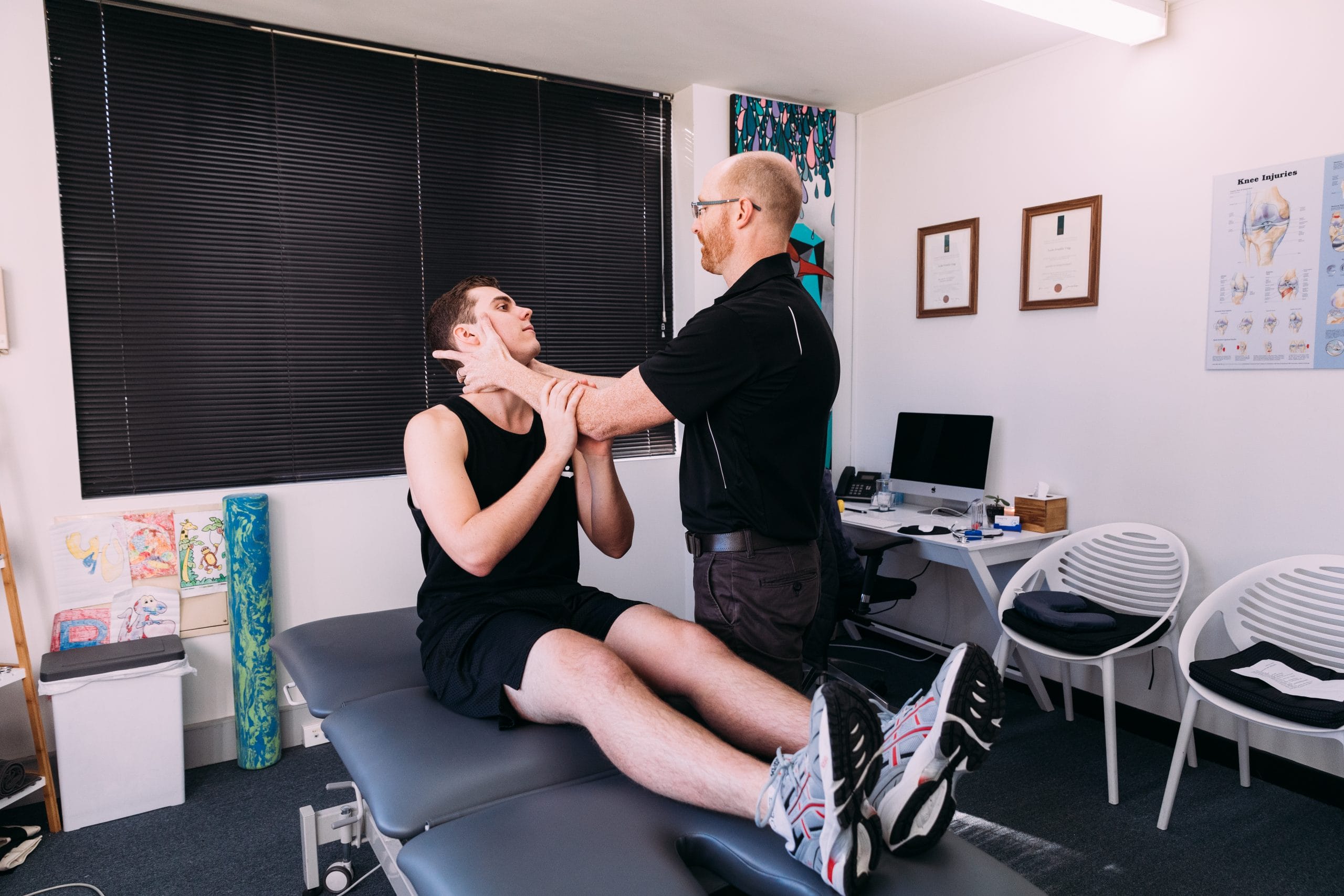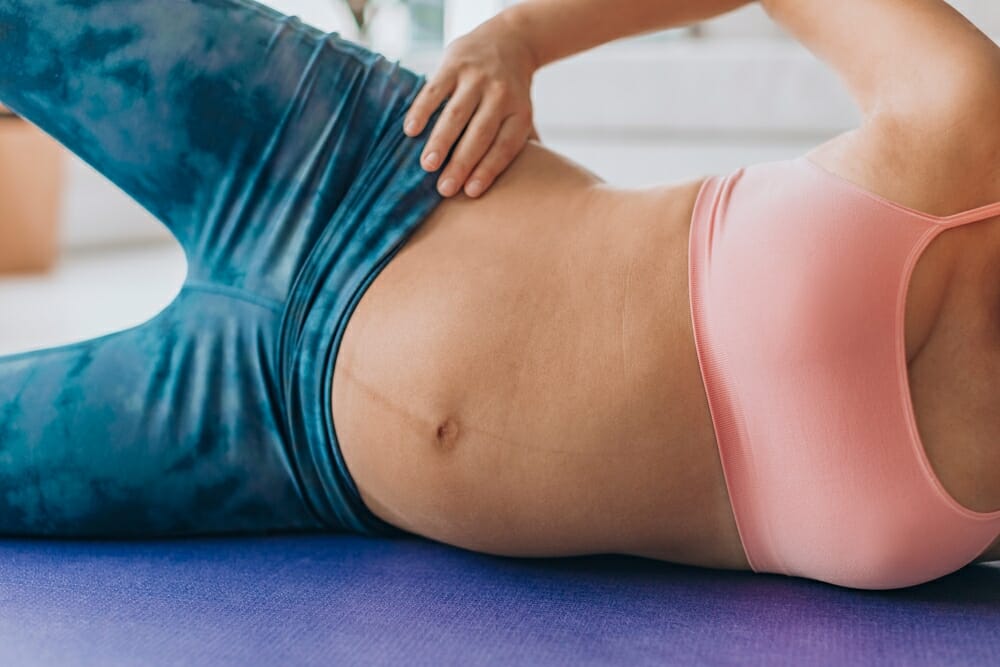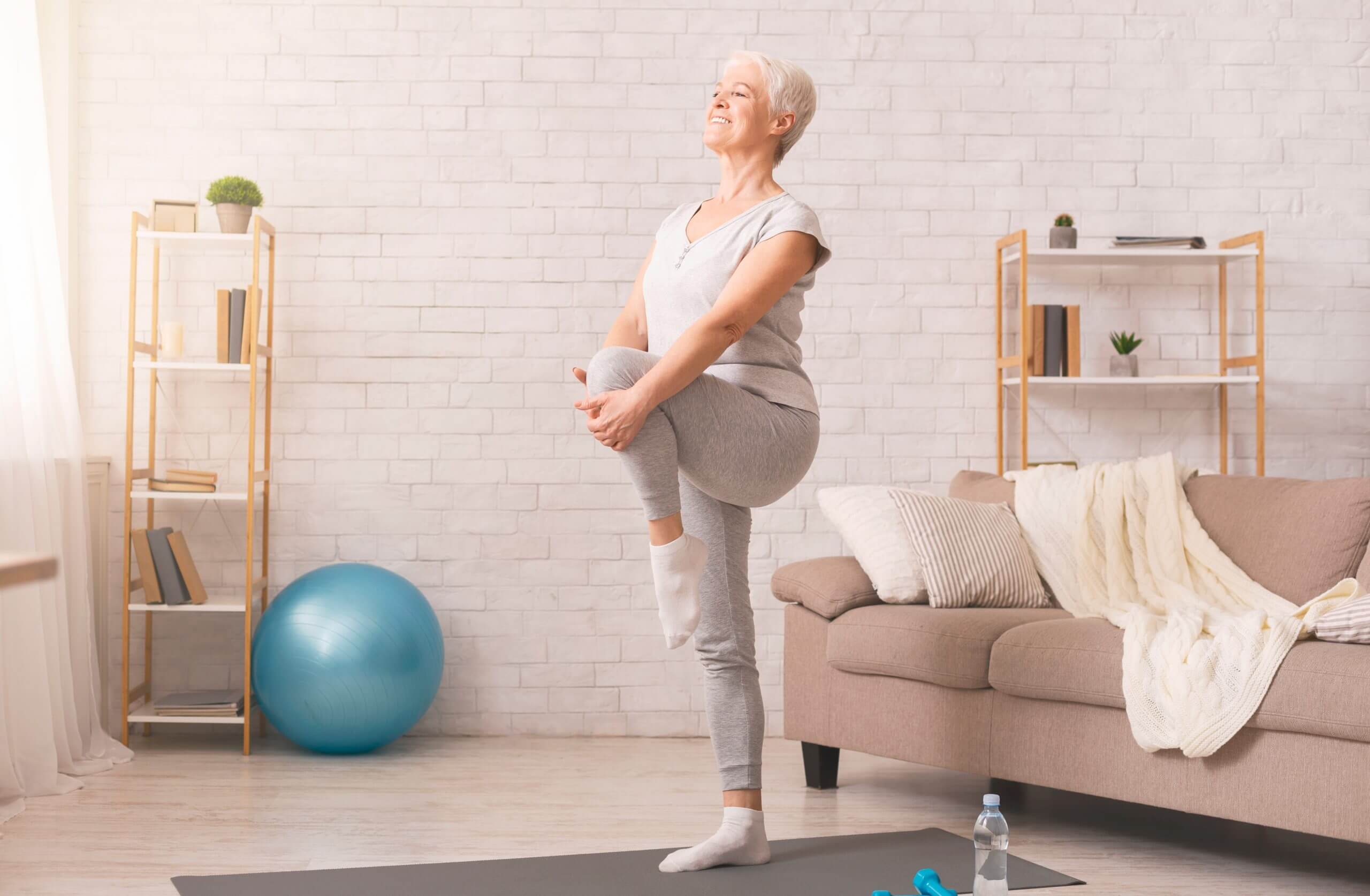
We rely on our sense of balance for pretty much everything we do. From getting out of the bed in the morning and getting dressed to getting ourselves to work, we simply couldn’t manage without it. It’s essential.
But don’t take it for granted. As we age or recover from injury – our sense of balance can often be put out, leaving our bodies prone to further injury, or worse.
You might be asking yourself – is it possible to have better balance?
Well, the answer is yes. It is.
How Balance Works
Before we get into the tricks of the trade, it’s good to know how this whole balance thing works. Our bodies have different systems that work together to create our sense of balance.
Musculoskeletal System
Made up of all our muscles, joints, bones, and ligaments, the body’s musculoskeletal system ensures we can stand up straight and find our centre of gravity.
Vestibular System
This sensory system combining our inner ear and visual aids provides the brain with important information about our surroundings, movement, and orientation. It basically keeps our bodies in check – allowing us to keep balance and know what position we are currently in.
If you were hanging upside down – you would know, thanks to your vestibular system.
Have I Got Bad Balance?
It’s a question that your physio will need to answer for you, but there are some warning signs you should keep an eye out for:
- Unusual dizziness
- Wobbly legs or unsteadiness
- Feeling faint or lightheaded
- Spatial issues, trouble to see straight
- Unusual clumsiness or falls
*If you experience any of the following you should immediately contact your healthcare professional or Physio Perth.
7 Exercise To Improve Balance
What’s the saying? No pain – no gain. This adage holds true for balance-related exercises. The best way to get better balance is actually by challenging the systems that create your sense of balance. Here are 7 ways to do just that:
1. Tree-Pose
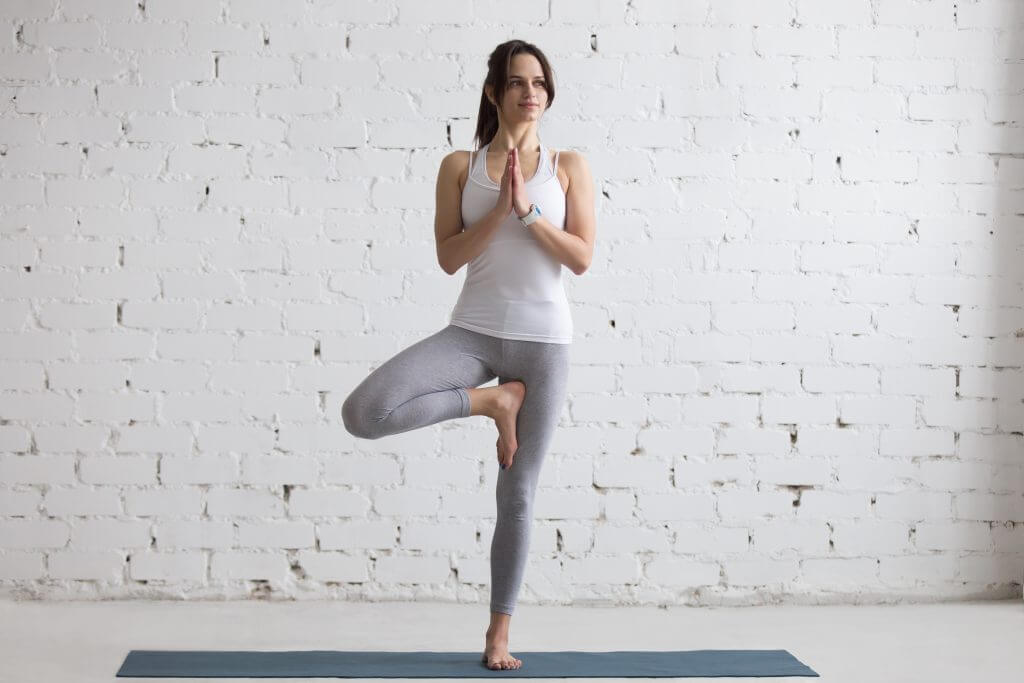
- Begin this exercise with both feet firmly together on the ground (mountain pose) and hands firmly down by your side.
- Bending your right knee – bring your right foot up and place it on your left leg (either above or below the knee). For beginners you may find placing your foot lower is helpful at first.
- Ensure your toes are facing down and your tailbone is facing the floor.
- Slowly bring your arms up to your chest – or for an extension connect your palms above your head.
- Repeat with the opposite side.
This exercise is a great way to start any workout routine, or morning! It centres the body and strengthens your legs in the process.
2. One-Legged Crunch
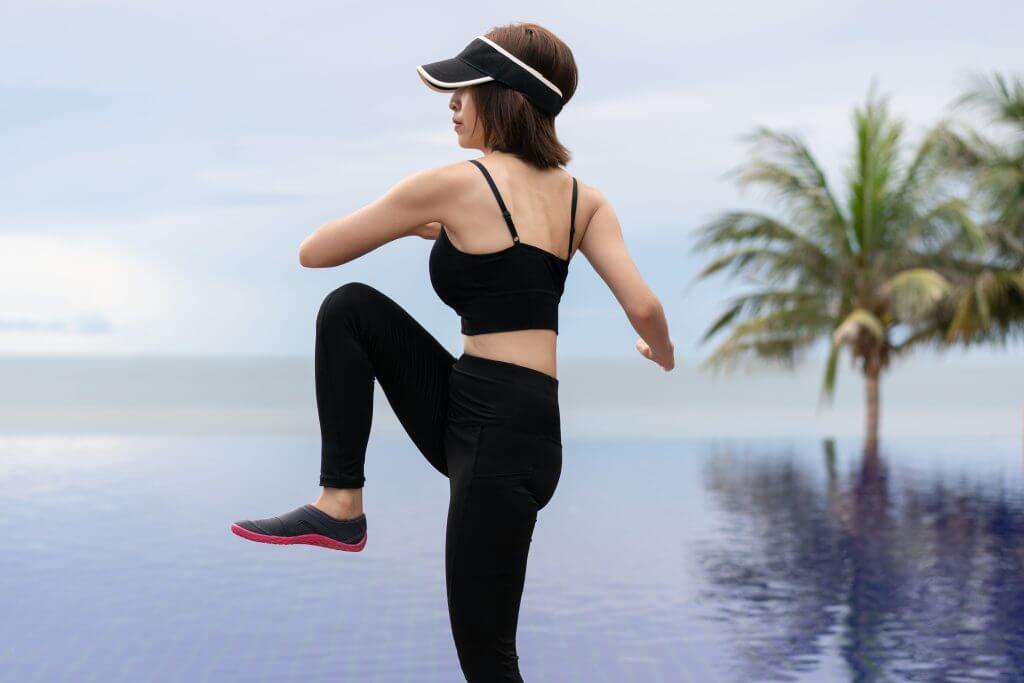
- Balancing on one leg, bring your hovering knee up until it’s at a right angle (or as far up as you can go).
- Bring your hands up above your head and clap as high as you can reach.
- Swing your hands down and clap underneath your raised leg as you tighten your abdomen
- Repeat sequence 20 times
The one-legged crunch throws a bit of everything into the mix. While standing on one leg is already quite demanding, extra movement in the arms and abdomen will target your entire body’s balance system.
3. Flying High Plank
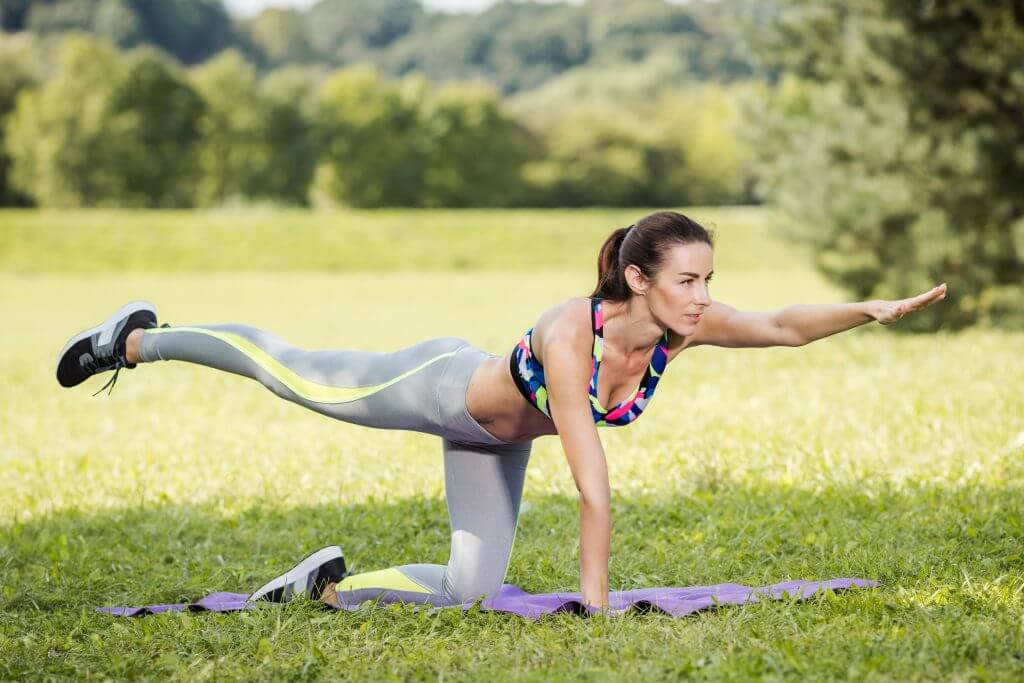
- Assume a high plank position – it helps to have solid ground beneath for this but a thin yoga mat will make it more comfortable.
- While in plank position – lift up one arm and raise it to the sky – hold for 5 seconds.
- Bring your hand down to normal plank pose.
- With your other arm – repeat the exercise holding for 5 seconds.
- Continue alternating for 10 rounds.
Strength and stability are closely linked in the body. By challenging your limbs in this way, you’re helping the body adapt to more extreme environments. To add more burn – move your feet closer together, or even experiment by lifting up the alternate foot.
4. Heel To Toe Walk
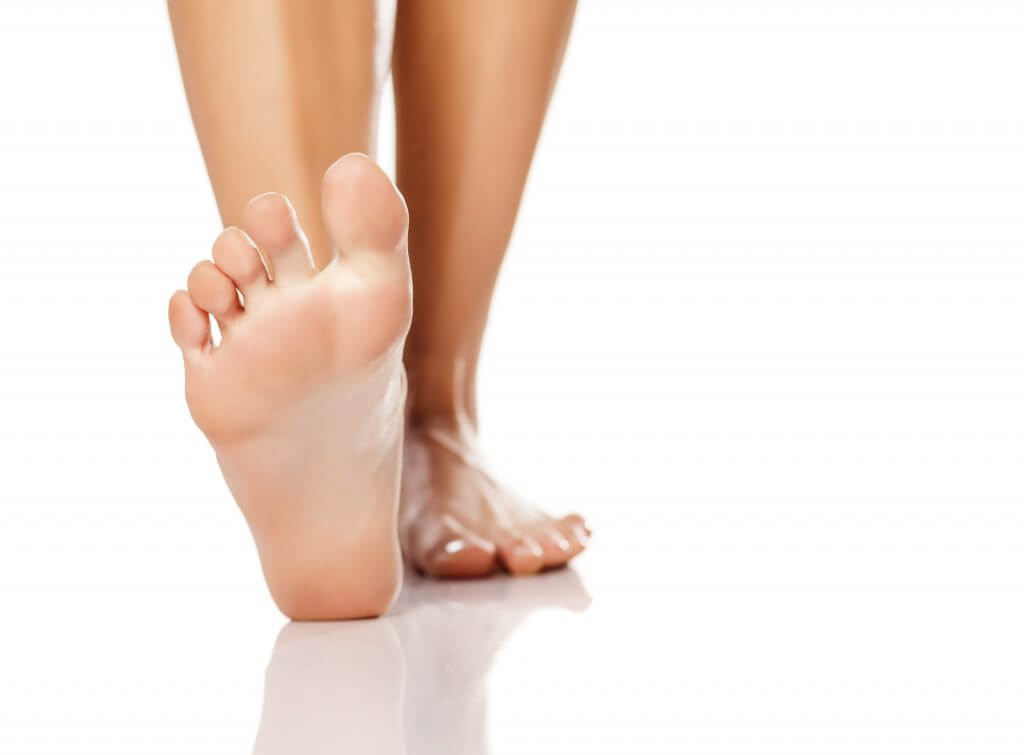
- With bare feet, start by finding a flat space to walk on.
- Take a step so your forward foot lands directly in front of the other foot – heel to toe.
- Keeping a straight line, continue walking forwards and shifting weight into the toes right before taking the next step.
- Continue for 5 or 6 metres then try walking backward.
Isn’t this just a weird way of walking? Yes, but it works wonders. This exercise helps align your body and improves your centre of gravity as you go. To make this harder, try balancing a tennis ball on your head.
5. Clock Hands

- Grab something easy to hold like a dumbbell or a household item the size of a large pot.
- Stand straight and hold your item straight out in front of you at 90 degrees.
- Now imagine you’re at the centre of a large clock with 12 in front and 6 behind.
- Lift your right leg up and find your balance
- Holding your object in your left hand, point your arm to where number 3 would be on your imaginary clock, then try number 6 and then back to number 3.
- Do this while keeping your eyes straight ahead throughout.
- Switch sides and repeat.
While this might seem a bit complex at first, the results in terms of balance improvement are phenomenal. By engaging different sides of the body and keeping your gaze straight ahead – you challenge the vestibular system to better calibrate for less obvious positions.
6. Toe Lifts
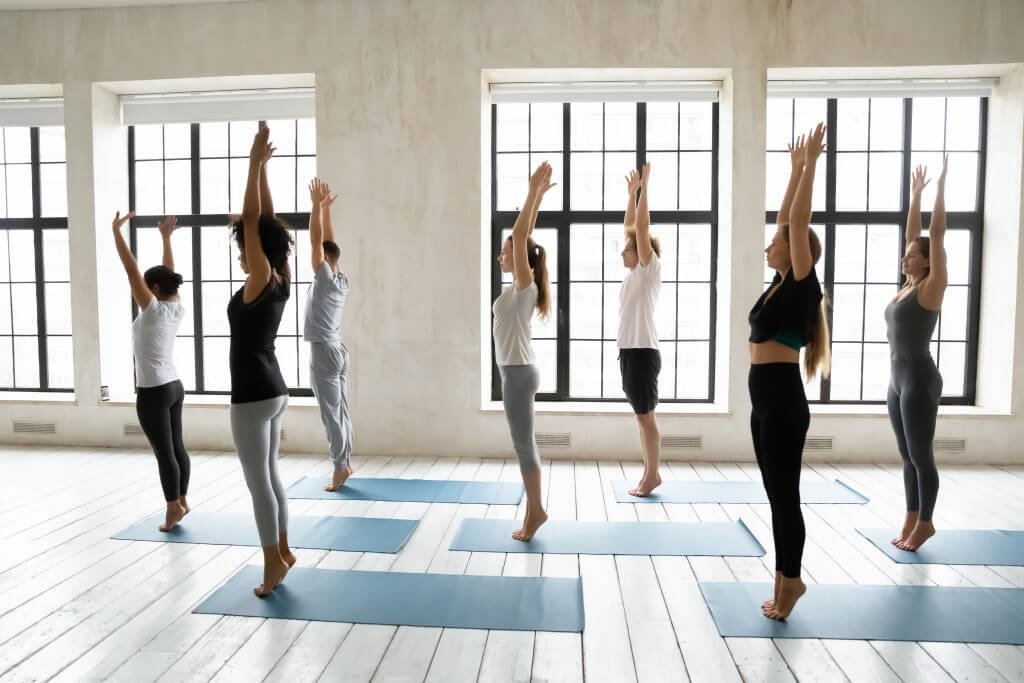
- Standing straight, lift both arms in front of you to 90 degrees.
- Lift your heels off the ground and balance on the balls of your feet.
- Stay here for as long as you can.
- While you balance here, bring both arms up and down or pretend like you’re directing traffic.
This exercise is simple, and for seniors is an easy way to get some balance training in with minimal equipment or effort. Much of our dynamic balance depends on the stability of the balls of our feet. Toe lifts are a great way to strengthen your feet and improve overall balance.
7. Flamingo
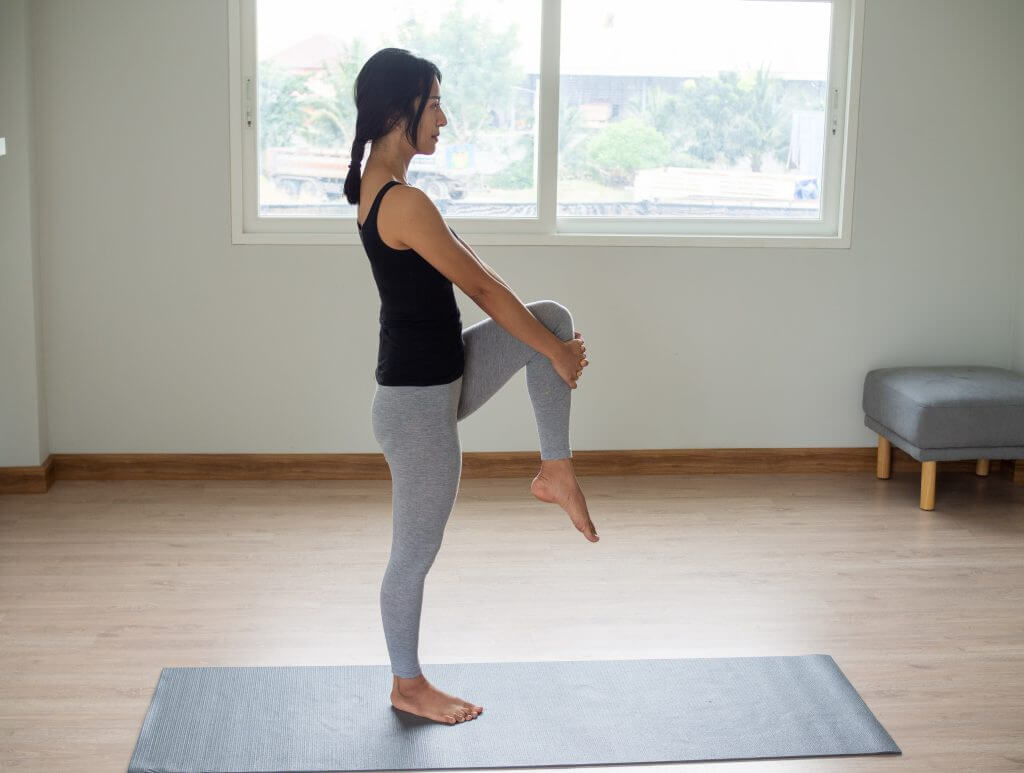
- With hands firmly on hips and gaze straight ahead, raise your right knee up as high as you can go.
- Keeping your back straight, hold this pose for as long as it feels comfortable.
- Try to lower your leg as slowly as possible with your hands kept on your hips.
- Swap legs and repeat.
Sometimes it’s the simple exercises that can be the most helpful. The flamingo pose assists your legs in improving both strength and flexibility. For a harder version try bending your other knee so your whole body moves closer to the ground.
Get A Personalised Exercise Plan Today
When it comes to getting the most out of balancing exercises – it’s good to know what you should be focusing on. Getting professional and personalised advice from a Perth Physio can greatly improve the effectiveness of your balance routine.
Want to kickstart your balance exercise routine today? Reach out to your local Physio Perth for a plan that suits you.

